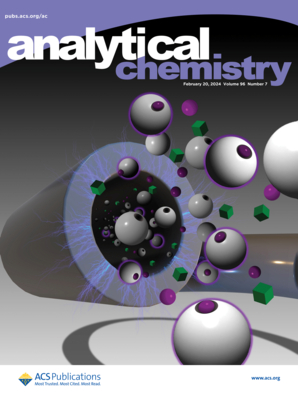One-Step Strategy to Synthesize Sulfonic Acid-Functionalized Silica Chromatographic Stationary Phases for Separation of Rare-Earth Elements.
IF 6.7
1区 化学
Q1 CHEMISTRY, ANALYTICAL
引用次数: 0
Abstract
Separation and analysis of rare-earth elements (REEs) with impurities are challenging processes. Ion-exchange chromatography has emerged as a valuable technology for rare-earth separation, and developing a simple and efficient preparation method for stationary ion-exchange chromatography remains a hot topic. In this study, a sulfonic acid-modified silica stationary phase was synthesized through a facile one-step strategy, where 1,3-propanesultone reacted with the silanol group. The stationary phase demonstrated effective cation-exchange chromatographic performance, achieving baseline separation of 15 REEs with resolution (RS) ranging from 1.9 to 6.8 for adjacent lanthanides. Excellent separation capability was also observed for impurity ions, including Fe, U, and Th, from the REEs. The stationary phase demonstrated an enhanced separation performance for REEs compared to conventional bonded phases. In addition, the columns exhibited excellent repeatability and stability. The separation performance was systematically evaluated across particle sizes of 3, 5, and 10 μm (with surface coverages of 0.89, 0.70, and 0.58 μmol/m2, respectively), demonstrating the universality of the preparation method. These findings support its potential application for preparative-scale stationary phases to separate REEs.一步法合成磺酸功能化二氧化硅色谱固定相用于分离稀土元素。
含杂质稀土元素的分离和分析是一个具有挑战性的过程。离子交换色谱法已成为稀土分离的一种有价值的技术,开发一种简单高效的固定离子交换色谱制备方法一直是研究的热点。在本研究中,通过简单的一步策略合成了磺酸修饰二氧化硅固定相,其中1,3-丙磺酸与硅醇基反应。固定相表现出有效的阳离子交换色谱性能,实现了15种稀土元素的基线分离,相邻镧系元素的分辨率(RS)在1.9 ~ 6.8之间。稀土元素对Fe、U、Th等杂质离子也具有较好的分离能力。与传统的键合相相比,固定相具有更好的分离稀土元素的性能。此外,色谱柱具有良好的重复性和稳定性。对3、5和10 μm粒径(表面覆盖率分别为0.89、0.70和0.58 μmol/m2)的分离性能进行了系统评价,证明了该制备方法的通用性。这些发现支持了它在制备规模固定相中分离稀土元素的潜在应用。
本文章由计算机程序翻译,如有差异,请以英文原文为准。
求助全文
约1分钟内获得全文
求助全文
来源期刊

Analytical Chemistry
化学-分析化学
CiteScore
12.10
自引率
12.20%
发文量
1949
审稿时长
1.4 months
期刊介绍:
Analytical Chemistry, a peer-reviewed research journal, focuses on disseminating new and original knowledge across all branches of analytical chemistry. Fundamental articles may explore general principles of chemical measurement science and need not directly address existing or potential analytical methodology. They can be entirely theoretical or report experimental results. Contributions may cover various phases of analytical operations, including sampling, bioanalysis, electrochemistry, mass spectrometry, microscale and nanoscale systems, environmental analysis, separations, spectroscopy, chemical reactions and selectivity, instrumentation, imaging, surface analysis, and data processing. Papers discussing known analytical methods should present a significant, original application of the method, a notable improvement, or results on an important analyte.
 求助内容:
求助内容: 应助结果提醒方式:
应助结果提醒方式:


